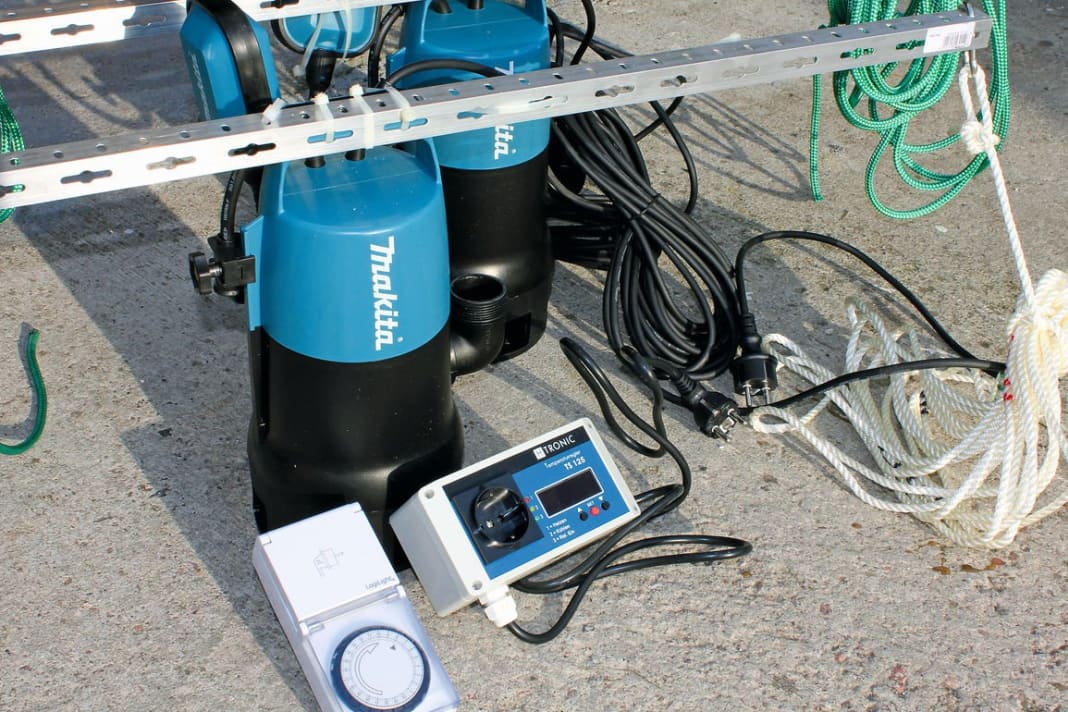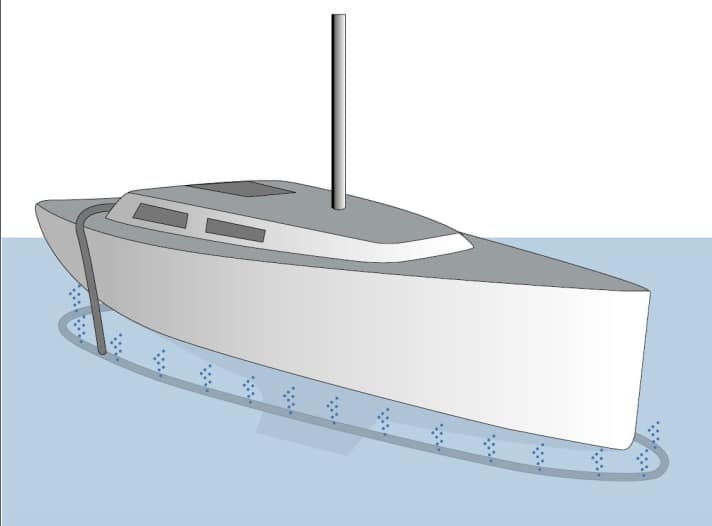
Winterising in the water is also becoming increasingly popular in our part of the world. For many boat owners, coming on board during the cold season has its appeal - whether for a winter tour or a cosy mulled wine evening with friends. However, it is essential to prevent the boat from freezing in order to avoid damage to the hull and fittings.
There are basically two tried and tested techniques for keeping the berth free of ice: Submersible pumps and aerators. Both systems utilise the fact that the water in deeper layers does not cool down below 0°C even in winter. The movement of the water prevents the surface from freezing over.
More about wintering in water
Submersible pumps - simple and effective
The simplest option is to use one or two submersible pumps. They pump the warmer deep water under the hull of the boat, keeping it free of ice. Even at double-digit sub-zero temperatures, the water at a depth of two to three metres remains between 2-4°C warm.
For optimum function, the system should operate in two stages: A temperature sensor monitors the water temperature on the surface. If it falls below 0°C, it activates a timer, which in turn controls the pumps. In practice, 15 minutes of pumping time per hour is usually sufficient. On very cold days, you can increase this to twice 15 minutes per hour.
There are a few points to consider when selecting a pump:
- Suitable for dirty water to prevent damage
- Sufficient immersion depth (at least 5 metres)
- Delivery rate depending on boat size (approx. 140 l/min for boats up to 8 m)
- Note power consumption (400 watts is usually sufficient)
The correct positioning of the pumps is crucial. They should be secured with a cross brace and ropes so that they cannot rotate on their own axis. The pump outlet must point upwards. If you have one pump, place it amidships; if you have two pumps, place one under the engine compartment and one in the front third of the boat. A depth of 1.5-2 metres below the keel has proved to be a good idea.
Temperature switch and timer control the system. It is important that the switching capacity of both devices corresponds to the maximum pump capacity. It is best to choose 16-amp models to cope with the higher starting current. Installation in a waterproof box on deck or in the cockpit is recommended to protect against the weather.
Photo tutorial: Build your own pump system






Air bubble systems - ideal for entire marinas
The second option is air bubble systems, which are suitable for both individual berths and entire harbour facilities. They work according to a simple principle: rising air bubbles ensure constant water movement on the surface.
For installation, first calculate the circumference of the boat (double the length plus double the width). This results in the required pipe length. As a rule of thumb, 1 mm holes at 1 metre intervals have proven to be the best.
The pipe system is assembled from 1-inch plastic pipes, whereby some connections should remain pluggable. The holes are drilled at the top. Lines on railings or handrails are used to attach the system to the boat. The pipes should hang about 0.5 metres below the surface of the water.
The compressor capacity can be calculated using a simple formula: Length of pipework / drilling distance x 0.7 m³/h = required m³/h
For a 10 m long boat, for example, this would be: 27 m / 1 m x 0.7 m³/h = 18.9 m³/h
The compressor should therefore have an output of around 20 m³/h. A timer controls it so that it only runs for 15 minutes per hour. The running time can be increased at very low temperatures.

Practical experience
Both systems - submersible pumps and aerators - have proven themselves in practice. The choice depends on the individual circumstances and preferences. Submersible pumps are easier to install and can be used more flexibly. Aerators are particularly suitable for larger boats or entire marinas.
Regardless of the system you choose, regular inspections are essential. The boat and the ice-free system should be thoroughly inspected, especially after periods of frost. This allows any damage to be recognised and repaired at an early stage.
With the right preparation and a reliable ice-free system, nothing stands in the way of safe wintering in the water. Boat owners can therefore enjoy the benefits of their floating home even in the cold season - whether for spontaneous winter tours or cosy evenings on board.
Meta description: Practical tips for boat owners on winterising in the water. A comparison of submersible pumps and aerators. How to keep your berth ice-free and protect your boat.

